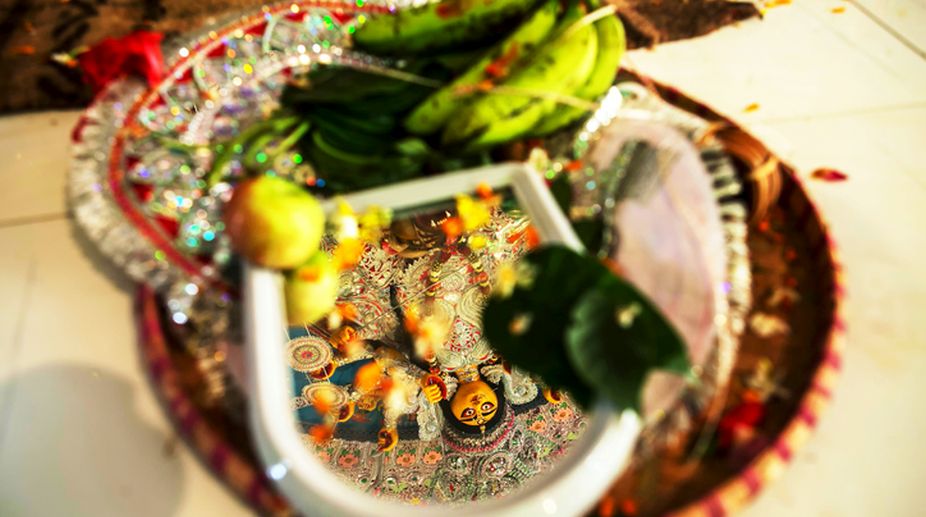Puja club shows the way for unity in diversity with vote for Ma
In a tribute to unity in diversity, India’s unique identity, the club brought together women from the neighbourhood, representing the various religions.
The significance of the day lies in its symbolic story of the victorious fight against evil.

(Getty Images)
Today is a victorious day for many who believe in doing good. You have been living a life of good over evil. So, celebrate Durga Ashtami with deep religious fervour.
Durga Ashtami is observed on the eighth day of the nine-day Navratri festival dedicated to goddess Durga.
The significance of the day lies in its symbolic story of the victorious fight against evil.
Advertisement
On this day, goddess Durga killed Mahishasur, the evil bull. It is believed that goddess Kali emerged from Durga’s forehead to destroy Mahishasura’s demons – Chanda, Munda and Rakthabija.
Ashtami puja begins with Mahasnan, which is followed by Shodashopachar Puja and havan (A ritualistic holy fire to ward off all ills and negativity from the surroundings). During this puja, nine earthen pots are placed together in the center of the puja area and worshipped. This ritual is said to invoke the nine forms of goddess Durga.
On this day, some communities invite eight young girls and one boy and offer them sanctified traditional food which include, halwa, puri and chanas. Gifts are also given to them. This ritual is called kanjaks.
At the end of Durga Ashtami, five different fruits are offered to goddess Durga. After all the rituals are performed, holy water from the river Ganges – Gangajal – is sprinkled all over the living space to purify the house and bring positive power.
On this day, apart from Durga Maa, some people also pray to Maa Maha Gauri.
On each day of Navratri, nine different forms of goddess Durga are worshipped. The festival will end on September 30 with Dussehra celebrations.
Advertisement